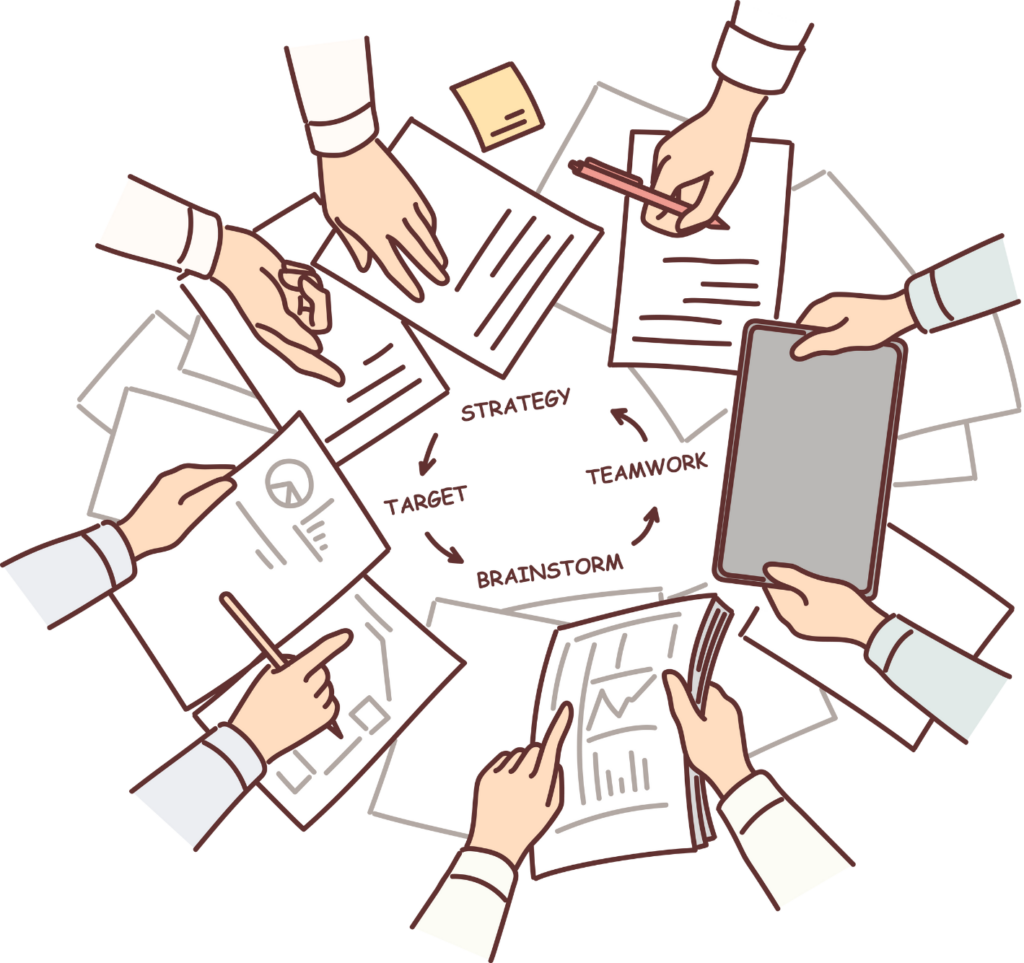Global Career Guide


- Jobs in Japan @ Daijob.com
- Global Career Guide
- Skill Up
- Business Japanese: Navigating Various Types of Meetings in the Japanese Workplace
Business Japanese: Navigating Various Types of Meetings in the Japanese Workplace


In the bustling corporate realm of Japan, the art of convening meetings is deeply ingrained in the fabric of business culture. Why does Corporate Japan hold meetings in such high regard? Meetings are revered for their ability to nurture consensus, cultivate relationships, and ensure collective understanding. Face-to-face communication, a cornerstone of Japanese etiquette, underpins the value placed on meetings as a preferred mode of interaction. The emphasis on group harmony, teamwork, and collaborative decision-making further underscores the significance of these gatherings.
In the dynamic business landscape of Japan, mastering the art of conducting and participating in different types of meetings is essential for professional success. For foreign job seekers, understanding the diverse range of meetings prevalent in Japanese corporate culture can be a game-changer. This guide delves into various types of meetings, including those specific to PDCA cycles and one-on-one interactions, providing valuable insights and vocabulary to help you navigate the Japanese workplace with confidence.
The Main Types of Meetings in Japan
Corporate Japan boasts a myriad of meeting types that cater to diverse functions within organizations. From strategic Board Meetings to team-focused Bukai-gi and relationship-building Kokyaku Kaigi, each meeting serves a distinct purpose in fostering organizational cohesion and progress. Project Meetings and Training Meetings are instrumental in coordinating activities, setting milestones, and enhancing employee skills, respectively.
1. 朝礼 (Chōrei) – Morning Meeting:
- Held at the beginning of the workday to set the tone for the day.
- Typically includes updates on schedules, tasks, and important announcements.
- Encourages team unity and alignment towards common goals.
- Participants are expected to be punctual and actively engage in discussions.
2. 会議 (Kaigi) – Formal Meeting:
- Involves in-depth discussions on specific topics or projects.
- Participants are required to prepare thoroughly and contribute their insights.
- Decision-making often happens during formal meetings.
- Respect for hierarchy and consensus-building are key elements.
3. 打ち合わせ (Uchiawase) – Informal Meeting/Consultation:
- More casual than formal meetings, often used for brainstorming or quick updates.
- Focuses on exchanging ideas and information in a relaxed setting.
- Participants can freely express opinions and suggestions.
4. 説明会 (Setsumei-kai) – Presentation Meeting:
- Involves presenting information or proposals to a group.
- Requires clear communication skills and visual aids for effective delivery.
- Questions and feedback are common at the end of presentations.

Types of Meetings in the PDCA Cycle:

1. キックオフ (Kikkofu) – Kickoff Meeting:
- Marks the beginning of a new project or initiative.
- Sets the project goals, timelines, and roles.
- Emphasizes team collaboration and alignment towards project objectives.
2. 計画会議 (Keikaku Kaigi) – Planning Meeting:
- Focuses on creating detailed plans and strategies for the project.
- Involves setting milestones, allocating resources, and outlining tasks.
- Ensures that all team members are on the same page regarding project objectives.
3. 進捗会議 (Shinchoku Kaigi) – Progress Meeting:
- Conducted to review the progress of ongoing projects.
- Discusses achievements, challenges, and potential adjustments.
- Aims to keep the project on track and address any issues promptly.
4. 反省会議 (Hansei Kaigi) – Reflection Meeting:
- Held after project completion to reflect on successes and failures.
- Encourages learning from past experiences to improve future endeavors.
- Emphasizes continuous improvement and growth.
How Meetings are Recorded in Japan:
- Meeting minutes (会議録 – Kaigi-roku) are meticulously recorded to document discussions, decisions, and action items.
- Minutes capture key points discussed, agreements reached, and responsibilities assigned.
- They serve as a reference for follow-up actions and accountability.
- In many Japanese companies, meeting minutes are circulated among attendees for review and approval.
The shift

Traditionally, meetings in Japan were synonymous with physical gatherings where participants engaged in meticulous discussions. However, the advent of modern technology has ushered in a shift towards virtual meetings, such as video conferences. This transition has been fueled by the need for efficiency, cost-effectiveness, and the facilitation of remote collaboration, especially in the wake of global challenges like the COVID-19 pandemic.
Balancing Benefits and Challenges
The positive impact of these meetings is undeniable. They promote information sharing, foster teamwork, and enhance decision-making processes. By providing a platform for open dialogue and consensus-building, meetings contribute to organizational transparency and alignment, ultimately driving business success.
Despite their numerous benefits, meetings in Corporate Japan also present challenges. The time-consuming nature of discussions, the potential for hierarchy to hinder open communication, and the pressure to maintain harmony can sometimes impede the efficiency and effectiveness of meetings. Striking a balance between inclusivity and efficiency remains a perpetual challenge in the Japanese business landscape.
Take Away
In conclusion, mastering the intricacies of meetings in the Japanese workplace is a key asset for foreign job seekers aiming to excel in this dynamic environment. Understanding the diverse types of meetings, their traditional and modern iterations, and the cultural nuances that shape them is crucial for professional growth and success in Corporate Japan. By leveraging the positive aspects of meetings while addressing their challenges, individuals can navigate these settings with finesse and contribute meaningfully to the vibrant tapestry of Japanese business culture.
Need a presentation for your next meeting?
Check out this article, Making Your Presentation Interactive.
Unlock the secrets to success in your job search and enhance your career prospects with a comprehensive job seeker’s guide, providing valuable insights to navigate diverse career opportunities inside and outside Japan!
Discover Your Next Role in Japan. Access more than 10,000 jobs for free!


